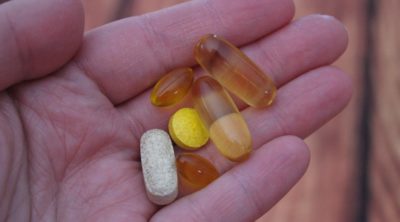
Cardiopulmonary resuscitation (CPR) is a technique essential to ensure at least a minimal amount of oxygen availability to the brain, in case of unresponsive or unconscious individuals. The following Buzzle article provides the steps for administering CPR in children.
Cardiopulmonary resuscitation (CPR) is the most widely used emergency technique that has helped to save many lives. Whether the person has experienced a heart attack, has been saved from drowning, or has collapsed after an accident, administration of CPR is essential.
It is very unlikely for children to suffer from a heart attack. However, they may have a heart failure due to various other causes like poisoning, head trauma, drowning, smoke inhalation, etc., and their breathing may stop. If you find a child in an unresponsive state, immediately dial the emergency medical number. By the time help arrives, you can administer CPR for at least 1-2 minutes.
How to Administer CPR on a Child
The American Heart Association (AHA) had come up with an easy acronym for people to remember the CPR steps in time. This acronym was ABC, that is, airway, breathing, circulation. Since 2010, it has been changed to CAB, that is, circulation, airway, breathing. Studies have found that giving fast chest compressions before giving mouth-to-mouth is a better way to save lives. Under the revised guidelines, one needs to give chest compressions for about 30 times followed by two breaths. This rule is said to be applicable for children and infants. AHA has found that compressions help pump blood into the brain and heart, sooner than giving mouth-to-mouth, thus minimizing the damage. Let us have a look at how to perform CPR on a child according to the new way.
New and Easy Way to do CPR
If you find a child in an unresponsive or unconscious state, first check if there is anything blocking his/her airway. A Heimlich maneuver may help to restore breathing. However, if this is not the case, then you need to begin the CPR procedure. Remember the acronym is CAB, and it has been explained below.
Circulation
Place the child on his/her back on a flat, firm surface, and kneel next to the child’s neck and shoulder region. Now, place the heel of one of your hand over the center of the child’s chest directly between the nipples. Then push straight down up to two inches or about one-third of the chest thickness. Allow the chest to come up, and repeat the same step 30 times. Two pushes per second should be the rate followed.
Airway
You need to clear the airway of the child after performing 30 chest compressions. Place your palm on the child’s forehead, and gently tilt the head back. Using the other hand, very gently lift the chin forward, and open the airway. Within 5-10 seconds, check for normal breathing. Observe if there is chest motion, and listen carefully for a normal breathing sound. If the child is gasping, it indicates abnormal breathing. If this is the case, you need to give the child mouth-to-mouth breathing. Children, as mentioned earlier, rarely suffer from heart attack, thus, you can continue giving a mouth-to-mouth. You should avoid giving a mouth-to-mouth, in case heart attack is suspected.
Breathing
Mouth-to-mouth or mouth-to-nose breathing is called rescue breathing. You should only give a rescue breathing, if there is no injury to the mouth or nose, and the mouth can be easily opened. Now, after you have carried out a head-tilt chin-lift maneuver, the airway will be open. Pinch the nostrils of the child to keep them closed during the mouth-to-mouth breathing. Cover the victim’s mouth with your mouth, and make a seal. Gently blow two breaths in the child’s mouth, and observe if the chest rises. Allow the air to escape by observing the chest going down. Now, give the child one more breath. If there is no chest movement, then you need to adjust the head, and blow again. If this does not help, stop this step, and continue with chest compressions.
When performing early CPR on a child, you need to give five cycles of compressions and breath. This generally takes about two minutes. Then, call the emergency number, and call for an ambulance. If you do not get any response after five cycles, continue with the chest compressions. If you have an unresponsive infant in your hands, then use just one hand for performing the chest compressions.
How to do CPR on a Baby
Lack of oxygen is the main cause for cardiac arrest in babies. Check if an airway obstruction is the cause. If not, then stroke the baby (DO NOT SHAKE), and look for response. If the baby is unresponsive, then begin CPR.
Restoration of Circulation
You should place the baby on its back on a firm, flat surface like the floor or a table. Then, imagine a horizontal line between the nipples, and place two fingers of one hand, just below this imaginary line. It will be somewhere near the center of the chest. Then, with the help of the two fingers, give the baby a gentle compression at about 1.5 inches deep. You need to perform compressions at a rate of 100 compressions per minute. Counting out loud is the best way to keep a track of the compressions.
Clearing the Airway
After you give the baby 30 compressions, you need to tip the head back gently. Lift the chin with one hand, and push the baby’s forehead down with the other hand. Within 10 seconds place your ear near the mouth, and listen for breathing sounds. Observe if there is chest motion, and check if the breathing sounds normal.
Breathing Maneuver for Infant
Cover the nose and mouth of the baby with your mouth, and deliver two gentle puffs of air. Do not blow in too much air, as the lungs of the baby are very tiny. Observe chest motion. If the chest does not rise, you should give a second rescue breath. If there is still no motion, you should adjust the baby’s head, and try again. If nothing helps, check for obstruction in the mouth. Carefully place your finger in the baby’s mouth, and try to sweep out the foreign object. Then, give two breaths for every 30 chest compressions. Perform the CPR steps for at least two minutes.
It is very important to know how to administer CPR on a child, as it will help to save a precious life, adn ensure oxygen availability to the brain.
Disclaimer: This Buzzle article is for informative purposes only, and should not be used as a substitute for professional medical advice.


